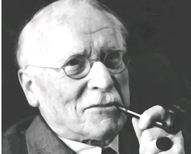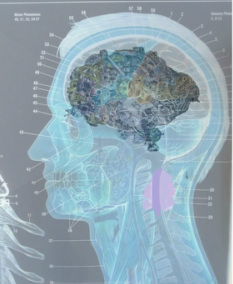Why Do We Dream?
I believe that it can really help to understand why we dream before rushing into changing how we dream. Lucid dreaming is an amazing tool for thinking and acting in a very special reality, but that reality is still operating during dream-time and continues to exhibit many of the same properties as regular dreaming. The reason I want to explain this in some detail is because it's my goal to help as many people as I can with their lucid dreaming goals.
|
|
Like many people, ever since I first experienced long lucid dreams I've felt that something very valuable to humanity exists in our ability to induce lucidity. I'm not sure what we'll eventually do with lucid dreaming. So far, lucid dreaming is an interesting peculiarity; lucidity allows for a range of adventurous and introspective journeys. With lucid dreaming you can manipulate the dream environment and will yourself to encounter specific dream characters and carry-out impossible, preplanned activities in a hyper-realistic space. Many lucid dreams fall short of their potential. Realizing you are in a dream rarely occurs spontaneously and is notoriously difficult to induce on purpose. And without knowledge and preparation a random lucid dream may only last a few moments before over-excitement snaps you out of the dream. With a desire and expectation for success and the application of effective lucid dream induction methods and techniques many more people will help us answer the question: "How far can we take this lucid dreaming thing?" I didn't have my first spontaneous, real lucid dream until I was 25. I was so impressed with what that experience was like I decided right then that I would find out a way to induce lucidity at will. I immediately ordered a NovaDreamer from the Lucidity Institute (when the original versions were available) and began reading any info I could find on dreaming and lucid dreaming. I even went back to college with my goal being to understand what dreaming is for and how we can hack into the system. It's been a decade since the NovaDreamer arrived in the mail. I've seen a lot since then. Till this day, my position is that we do not have a great method for lucid dream induction. Yet. But I do think that we are making progress, and The Lucid Dream Site was created so that we can all learn and gain from whatever usefulness we ultimately derive from lucid dreaming. Along my journey I picked up an undergrad degree in Psychology and a Master's in Developmental Psychology, with an emphasis on psychological research - with a focus on dreaming. I'm a skeptical person, but I believe that almost anything could be possible. I'm trained in the scientific method and I am quick to admit "I don't know" if I don't. With that said, I do think that I have an accurate idea of what is going on in our dreams. And I'm still growing, eager to share what I learn. From a theoretical perspective, my views on dreaming are influenced by many researchers from the past century of dream studies. I also have a collection of data from my own studies. My personal dream records span two-decades+. One of the most obvious things I have noticed between all these dream reports is how generic they are. Most dreams fall into one of the few "typical dream" themes. The seemingly crazy dreams you have are likely similar to the dreams everyone has. The characters may resemble people you know and "day residue" from your life will stand in as place-holders, but the overall schemes are structured in a relatively few ways. The range of dream themes is not only narrow, it is also predominantly negative. Developmental changes likely happen throughout the lifespan in relation to dream content and there is variation between people, but for the most part dreams involve threatening events. This wasn't fully apparent to me until I did my Thesis project and analyzed a lot of dreams with something called the Dream Threat Scale. I found that three-quarters of the dream reports I looked at devoted about 3/4 of their sentences to describing threatening events. These numbers are a little high compared to the findings of other researchers, (including the originator of the Threat Simulation Theory of dreaming - Antti Revonsuo). This high level of threat description is likely due to this: In my studies I ask for dreams from as recent as the last one recalled, to all the way back to the first remembered dream. Apparently, not only are dreams more negative than positive anyway, but the more negative dreams are better recalled also. |
|
So, What Are Dreams?
 S. FREUD
OK. Let's start at Freud. Before S. Freud we had lots of different ideas from around the world and throughout time concerning the meaning of dreams. Dreams are depicted in many of the great religious texts (Old and New Testaments, The Holy Koran) and have been used by different cultures for initiation purposes and divination, etc. In at least one indigenous culture, you don't even have a real name until you dream it. But for our purposes, we usually credit Freud with igniting a strong interest in dreams for the Western world. Freud popularized the idea that in dreams there is the manifest content, that which appears to be happening in dreams, and there is the latent content, or the true, hidden meaning behind the dream. Freud also thought that most dreams are wish-fulfillments. In disguise, of course. In this view, the wishes we have are so repulsive to our ego that they are disguised in dreams as a way to protect us from waking up. Oh, and dreams are influenced by events from the prior day, called day-residue. With his Interpretation of Dreams, Freud influenced the public imagination on the nature of dreaming more than any other person. But Was Freud Right?
 C.C. JUNG
Freud's one-time colleague, the 20-year-younger C. Jung, split from Freud's camp due to a difference of opinion regarding the nature of the unconscious. (Believe me, we still don't have the whole conscious-unconscious thing worked out.)
Freud saw the unconscious as a shadowy place where our darkest desires are repressed for the benefit of protecting society. Jung saw that Freud's view had something to it, but added the importance of the collective unconscious - here were the inherited archetypes, which we are all born with and share. These archetypes shape our experiences, and are a priori to learning from new situations. This is kind of like biological schema, or behavioral scripts, or even instincts. If it is true that certain themes and characters are "hard-wired" or "built-in" to us, then everyone should have the same few dreams, regardless of what time in human history or what geographic location they live in. Just How Typical Are Dream Themes?
 BILL DOMHOFF
Although people who studied dreams must have always known that there are certain observable similarities between many dreams, it wasn't until the 1950's that physiological correlates to dreams and Rapid Eye Movement (REM) sleep were discovered. Today we know that most vivid dreams occur during REM sleep. But REM sleep is what is observable from the outside, not the experience of dreaming itself. So, what is the best way to investigate dreaming? Even with today's brain scans and ability to monitor the various stages of REM and non-REM sleep, one of the best ways to learn about dreaming is through the analyzing of actual dream reports. Either upon awakening or later (sometimes many years later), a dream is recalled and recorded. The method is imperfect. People forget, confabulate, lie, feel ashamed, or otherwise do not report the dream as it actually occurred. Still, it's the best we got. And when enough reports come back with such similar results, you have reliability, and with reliability you have predictability. If you want to catch a flight, you have to accurately predict where and when you need to show up. Dream interpretation is when you tell someone that you had a dream about food, and they tell you that your soul is begging for you to nourish it. That is not what we do here. Dream analysis is a method of transforming words and sentences in a dream report into numbers, so that statistics can be compiled from a set of many dream reports. When we have the numbers from large groups of people, we have "normative" data, and we can compare future individual reports to these norms. The most widely used analysis system was developed by C.S. Hall and R. Van de Castle, and the norms established in their studies - going back to the 1960's - have held up very well against later studies. Involved in this work from early on was W.G. Domhoff. A treasure of findings can be found on Domhoff's site: dreamresearch.net Using the Hall and Van de Castle system, we find that dreams tend to have more misfortunate events than fortunate and more failures than successes. Dreams also tend to have a lot of aggression and negative emotions. Using other study methods, we find from Typical Dream Questionnaires that most people rank the same few dream themes as the most common. There are age trends and sex trends, but you can probably guess the most common dream themes, because you have them too! Being chased, falling, can't get somewhere on-time, can't get something accomplished. Sex. Sex with unexpected complications. Being in an unfamiliar place, knowing you should get out, right away. Phone/computer/car not working properly. But also cool things, like seeing a loved one, who is really deceased. But there's also seeing loved ones die, in the dream. But then there's flying. Never enough of that though. Young children have more animal characters, men dream of mostly male characters, women dream of equal numbers of male and female characters. So, we have some fairly reliable statistics. Domhoff and others have given us a picture of what dreaming looks like. But he is careful in his claims as to dream function. O.K. Dreams Are Generic. But What Are They For?
 KELLY BULKELEY
K. Bulkeley claims to be the biggest nerd on dreaming in the world. A lot of people would want that title, but I guess you'll have to challenge him for it. Bulkeley has written books on how to teach about dreaming in the classroom, and he has studied how dreaming is intertwined with history and religion/mysticism. Bulkeley's conclusion is that dreaming is first and foremost a virtual simulation space for ludic activities. Not lucid -- ludic. This means playful. Some comparisons that can be made between dreams and playing are: both occur in a safe time-space where we are "free" to experiment and try out scenarios without dangerous repercussions; both involve strong emotions, exaggeration, and draw their raw material from real life - usually acted out as "play" reflecting survival concerns (think hide and seek, tag). The ludic claim also implies that playful is the best description for dreams because it accounts for a wide variety of dream themes. Well, dreams are safe rehearsals of survival concerns, but... Maybe the Type of Play in Dreams Isn't For Fun Time
 ANTTI REVONSUO
A. Revonsuo proposed the Threat Simulation Theory (TST) of dreaming in 2000, with an article including over a thousand citations. Although a lot of evidence pointed to the TST, it still feels counter-intuitive to many people. For decades, dream researchers have been trying to prove that dreaming is some sort of problem solving or emotion-regulating (soothing) system. Nightmares are often viewed as the dream system malfunctioning. Turns out there is little evidence for dreaming being involved with learning (spending time in specific sleep stages has been correlated with different types of memory processing), and dreams tend to be more disturbing than relieving. Instead of riding on the dreams-as-wish-fulfillment bandwagon, Revonsuo looked at the evidence. Dreams are usually realistic (enough to not realize it's a simulation) rehearsals of dealing with failing attempts to accomplish something, or another unfortunate event.
The TST takes an evolutionary-psychology approach, and outlines evidence for dreaming as an adaptive mechanism that evolved as a survival mechanism. In dreams our ancestors could practice life-saving skills which would be dangerous to practice in the "real world." When the real world becomes more stressful/threatening, the dream system becomes more active and increasingly threatening. The system is more apparent in children going through tough times, because their life experiences have not had a chance to influence the dream system. In PTSD, as in soldiers, veterans, and trauma victims, we often see horrible, repetitive dreams which depict the traumatic event or versions of it. The dream system is keeping these people vigilant for a return of the horrible event. Unfortunately there is, more usually than not, a mismatch between the function of the dream-threat-system and our modern needs. For most of us, typical dream themes like being chased by strange men or animals, or of falling off of ledges, do not serve us well anymore. These are not the threats our environment has for us. Today we have to pay bills and avoid excessive sugar intake. And Finally, This is the Real Benefit of Lucid Dreaming...

I think that most people experience their one or two moments of lucidity in dreams when they are in the middle of a nightmare or some overly bizarre scenario, and the thought arises: "This is just a dream, I can wake up and get out of this situation!" This is like squandering away the greatest gift. But escaping a dream by waking up isn't the only reason for short lucid moments. The second issue is that realizing you are inside of a dream can be TOO exciting. The lucid dream mind state involves a feeling of euphoria and excitement (and often apprehension/fear, as in most dreams), but the lucid dream can be difficult to maintain. It is easy to get engrossed in the dream and lose lucidity, returning to a "normal" dream.
It's also easy to get so overwhelmed from excitement that the dream system switches off and you wake up. But back to the point, one of the big benefits to achieving lucidity. Listen, the survival-enhancing function of dreaming about prehistoric-type threats served us well. I mean, we made it this far, right? But human beings are at a kairos - a crossroad - where we are becoming aware that our limited biological bodies, with all of its fears and hopes, has to continue merging with a "cloud-like" reality (right now we call it digital or electronic, it is the internet, our devices, our new behaviors and ambitions) largely directed by little more than our own will. The monsters in our dreams were developed a long time ago to spar with. To train us for preparing for worst case scenarios. We have been dreaming of zombies since way back when. We have been falling in dreams since we were more ape than man. We were that creature with no claws, small mouths and teeth, not really built to battle a big carnivore. It made sense for us to rehearse running away. And then we made spears and whatnot, and then it made sense to practice running away from strange humans chasing you with spears. But today? The system is still operating. When you aren't being chased, you're probably scrambling in your dreams to get a presentation together or catch a ride on time to get some where. And yet, there is something far more interesting you can do in your dreams. You can become lucid and face your primitive (and modern) fears, and move beyond them. So, let's learn how to get lucid, and then we can talk about what to do once you are lucid... |

